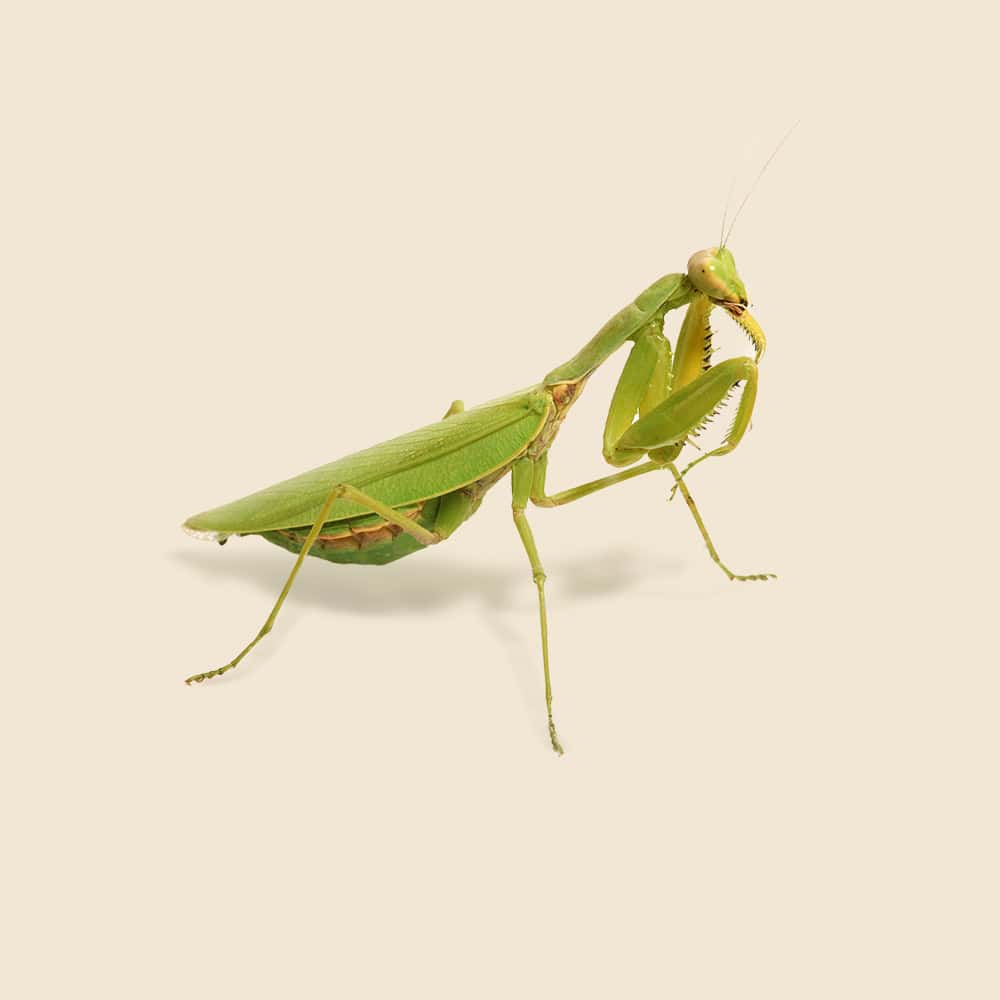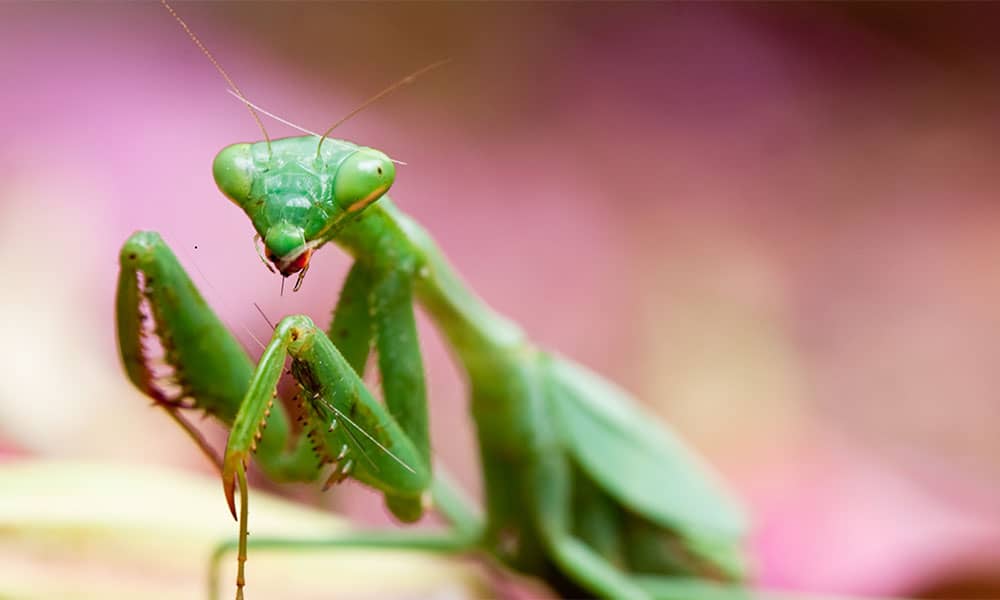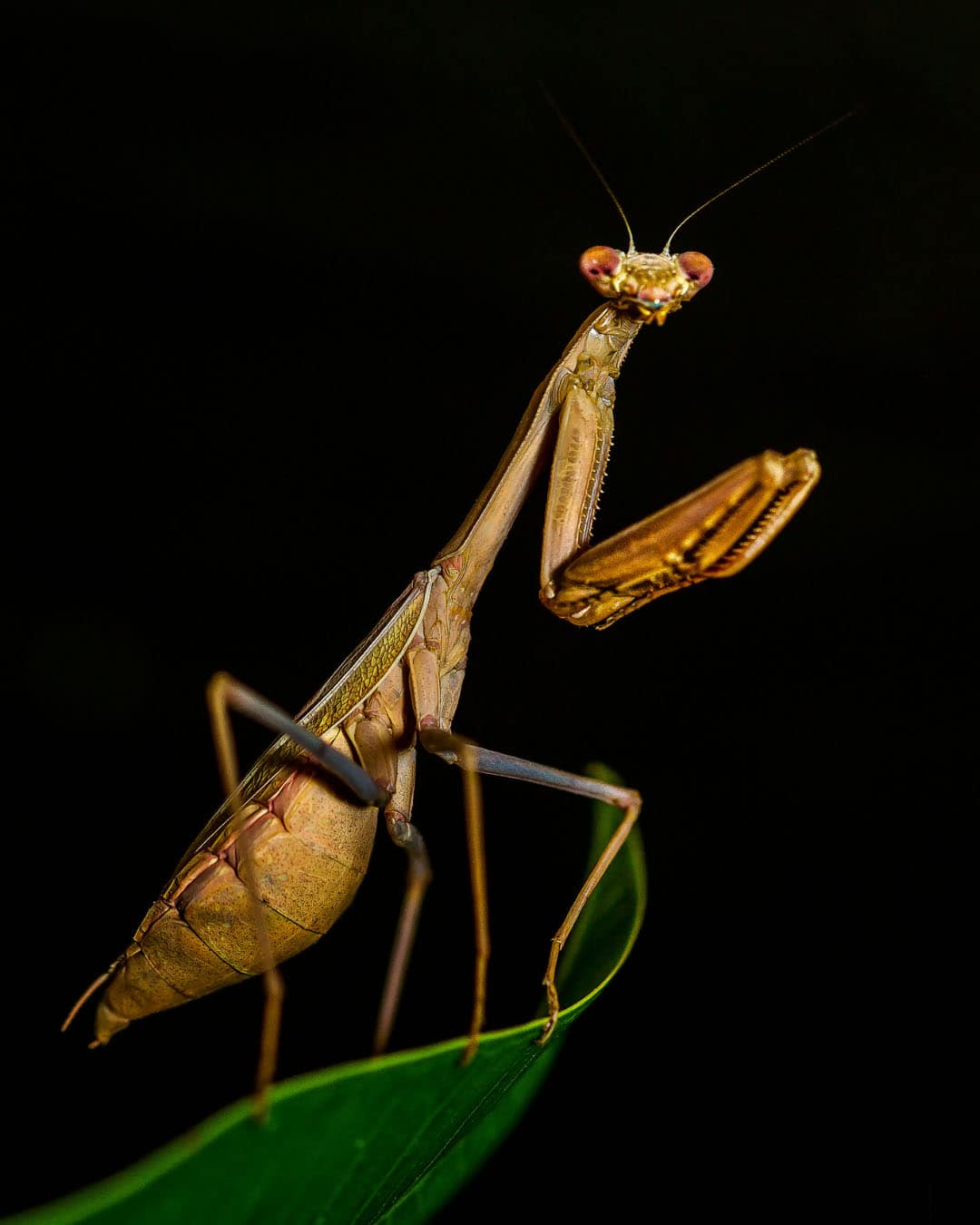Praying Mantis Facts & Information
Praying mantises are fascinating insects known for their distinctive posture and predatory behavior. With their elongated bodies and triangular heads, these beneficial predators are often seen in gardens and landscapes, where they play a crucial role in controlling pest populations. While generally harmless to humans, their presence can lead to misconceptions about potential infestations, especially when they appear in large numbers.

Mantodea
What You Need To Know About Praying Mantises
What do praying mantises look like?
Praying mantises are distinctive insects known for their elongated bodies and unique posture, which resembles a prayer pose. They can range in size from about 1 to 6 inches long, depending on the species. Their triangular heads, large compound eyes, and long, spiked forelegs give them a predatory appearance. They often display green or brown coloration, allowing them to blend in with foliage.
What do praying mantises eat?
Praying mantises are carnivorous and primarily feed on a variety of insects, including flies, crickets, and moths. Larger species may even prey on small vertebrates like lizards and frogs. Their impressive hunting skills make them effective predators, and they are known for their ability to catch prey with their swift, grasping forelegs.
What sort of habitat do praying mantises live in?
Praying mantises are found in diverse habitats, including gardens, forests, and grasslands. They prefer areas with plenty of vegetation, which provides them with both food sources and camouflage. Mantises can often be seen perched on leaves or stems, waiting for unsuspecting prey to pass by.
How do praying mantises commonly behave?
Praying mantises are solitary creatures that exhibit fascinating hunting behaviors. They are known for their “ambush” style of predation, remaining still for extended periods before lunging at their prey with incredible speed. Mantises also engage in unique mating behaviors, where the female may consume the male after copulation—a phenomenon that has garnered much interest and study.
Did you know this about praying mantises?
Praying mantises have excellent vision due to their large compound eyes, which allow them to detect movement from almost all angles. Interestingly, they are sometimes called “praying mantises” because of their distinctive posture, where they hold their front legs together as if in prayer. Additionally, they have been used in various cultures as symbols of calmness and contemplation, as well as in natural pest control efforts in gardens.
Understanding Praying Mantis Infestations
Understanding praying mantis populations is important for effective management. Adult mantises can vary in color and size, typically ranging from 2 to 6 inches long. They are characterized by their unique "praying" posture, where they fold their front legs in a way that resembles prayer. Praying mantises are solitary hunters, preying on a variety of insects, including flies, beetles, and even other mantises. They are also known for their ability to camouflage themselves among vegetation, making them skilled ambush predators.

How Hearts Handles Praying Mantis Treatment
Hearts Pest Management employs an integrated pest management approach to handle Praying Mantis infestations.
Praying Mantis Inspection
Praying Mantis Treatment
Praying Mantis Prevention
Educational Resources

Think You Might Have a Praying Mantis Infestation?
At Hearts Pest Control, we understand the challenges associated with Praying Mantis infestations and are here to provide professional solutions tailored to your needs. Flourishing in warm and humid climates, they are prevalent in many regions, including San Diego County, Orange County, and Los Angeles County.